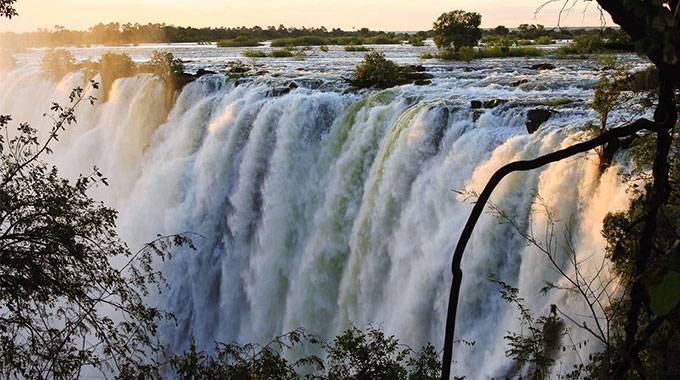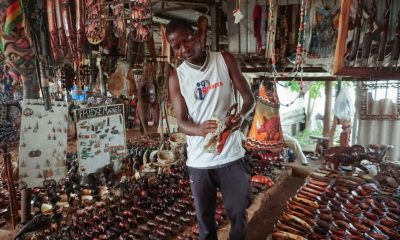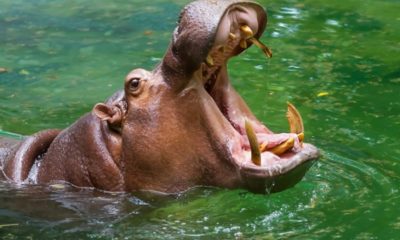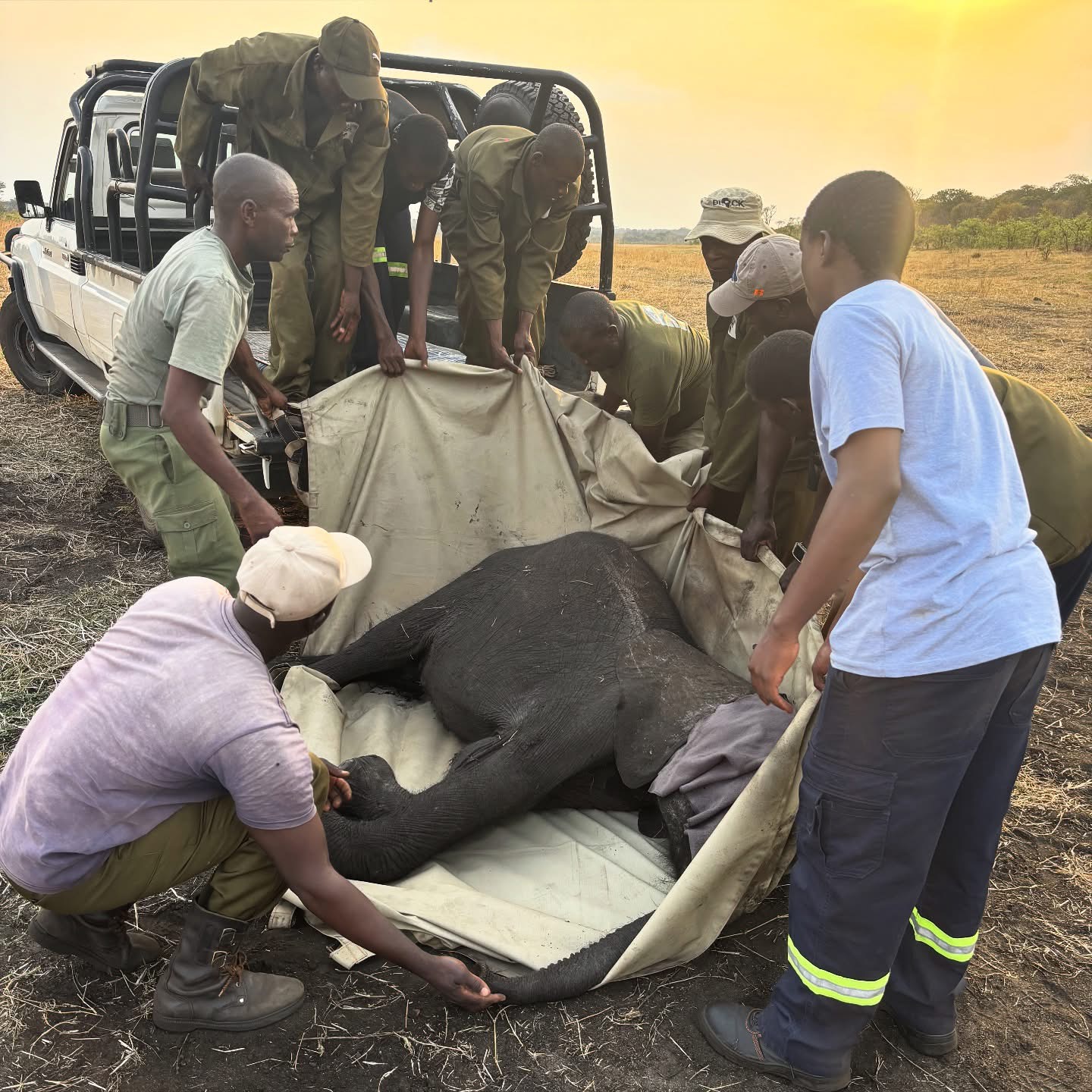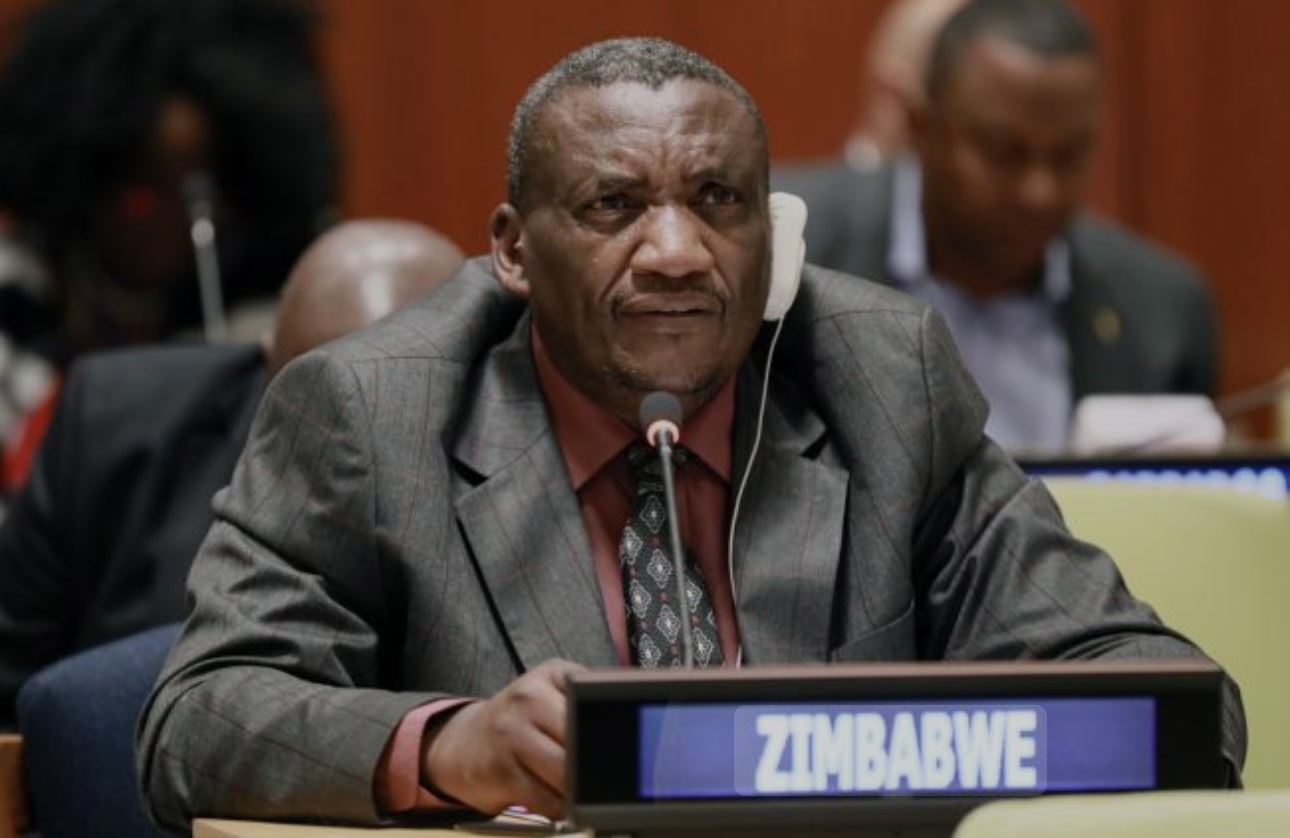BY TOM NICHOLLS
In 2016, I was leading a natural history trip to Zambia and Zimbabwe with Leslie Stoltz for a group of people who were eager to visit Victoria Falls; we weren’t disappointed.
Our local guide advised us to wear raincoats and shoes with good footing, otherwise we might get really wet and slip on wet, slippery rocks on a trail to and along the rim of one of the world’s iconic wonders, Victoria Falls.
As the largest waterfall in the world, Victoria Falls needs little introduction, but reading about it and seeing it are two entirely different things.
They can’t compare.
As we neared the falls on the trail, it didn’t take us long to realize the need for raincoats and good walking shoes.
The trail was slippery from heavy mist rising from the plunging waterfalls that was so thick at times we could hardly see the falls, let alone take good pictures of it. We probably should have had ear plugs too as the sound was deafening at times as the water plunged down the gorges of the falls.
The falls surely earned its official name — The Smoke that Thunders!
The name comes from the Lozi language of the area — a name that perfectly captures the almost mystical atmosphere of this World Heritage Site. Victoria Falls is a place of myth, magic, adventure, beauty, and romance.
Despite water thundering down gorges releasing mist seen for miles from the air looking like smoke, we were often thrilled with breath-taking vistas of water plunging down steep cliffs surrounded by lush vegetation and the birds and animals that live in the area. It is a sight that none of us will soon forget.
If you are a traveller, it is a ‘must see’ and, for that reason, I would like to provide you with some background information from our safari and Africa Geographic.
The world-famous Victoria Falls mark the border between Zambia and Zimbabwe in Africa, where the mighty Zambezi River gathers its strength and tumbles off a fractured basalt plateau into a series of dramatic gorges 330 feet below.
We held a memorable birthday party for my son, Cory, while floating on a boat on the Zambezi just above the falls among snorting hippos!
The thought crossed some of our minds about what might happen to us if our boat motor stopped working!
Victoria Falls is not the tallest waterfall in the world (on land, this title is held by Angel Falls in Venezuela), but it has the single largest continuous falling curtain of water in the world at about 5,600 feet.
At the height of the rainy season, five hundred million cubic meters of water hurtle over the edge every minute, sending up clouds of rainbow spray.
From there, the river is forced through a narrow and twisting path between walls of steep rock — a churning tumble of Grade V rapids ideal for thrill-seekers looking to test their nerve.
None in our group were thrill-seekers, thank goodness!
Zambia lies on the northern and eastern side of the falls, while Zimbabwe is situated to the south and west.
The neighboring cities of Victoria Falls on the Zimbabwean side and Livingstone on the Zambian side are thriving tourism hubs easily accessed by road, rail or air.
Upstream of the falls, the Zambezi River flows across an almost flat basalt plateau in a shallow valley teeming with wildlife and dotted with sedate luxury lodges away from the bustle of the central tourism regions.
The two countries are connected by the Victoria Falls Bridge — a 1905 marvel of engineering that spans the Second Gorge, designed as part of Cecil Rhodes’ Cape to Cairo Railway vision.
The river is usually at its most dramatic from February until May where the greatest volume of water tumbles over the falls.
The flip side of this is that there is a chance the falls may not be clearly visible, obscured by the spray.
After months of dry weather, the falls reduce and reach their lowest levels towards the end of the year.
At certain times of the day, the mist from the waterfall catches the light at just the right angle, creating arched rainbows.
Viewed from the forest amidst clouds of butterflies and accompanied by the cries of trumpeter hornbills, the effect is like something out of a fairy tale. Possibly even more magical are the lunar rainbows, visible for three nights a month.
There are two small national parks protecting the falls and their surroundings, the Mosi-oa-Tunya National Park on the Zambian side and its twin, the Victoria Falls National Park, on the opposite side of the river.
Both parks are teeming with wildlife with over 460 bird species found in the area around Victoria Falls and elephants are everywhere and we saw plenty of them and many interesting birds including the trumpeter hornbills. – Nature Education Center

 Slider3 years ago
Slider3 years ago
 National4 years ago
National4 years ago
 Tourism and Environment4 years ago
Tourism and Environment4 years ago
 Opinion4 years ago
Opinion4 years ago
 Special reports4 years ago
Special reports4 years ago
 National4 years ago
National4 years ago
 National3 years ago
National3 years ago
 National3 years ago
National3 years ago
